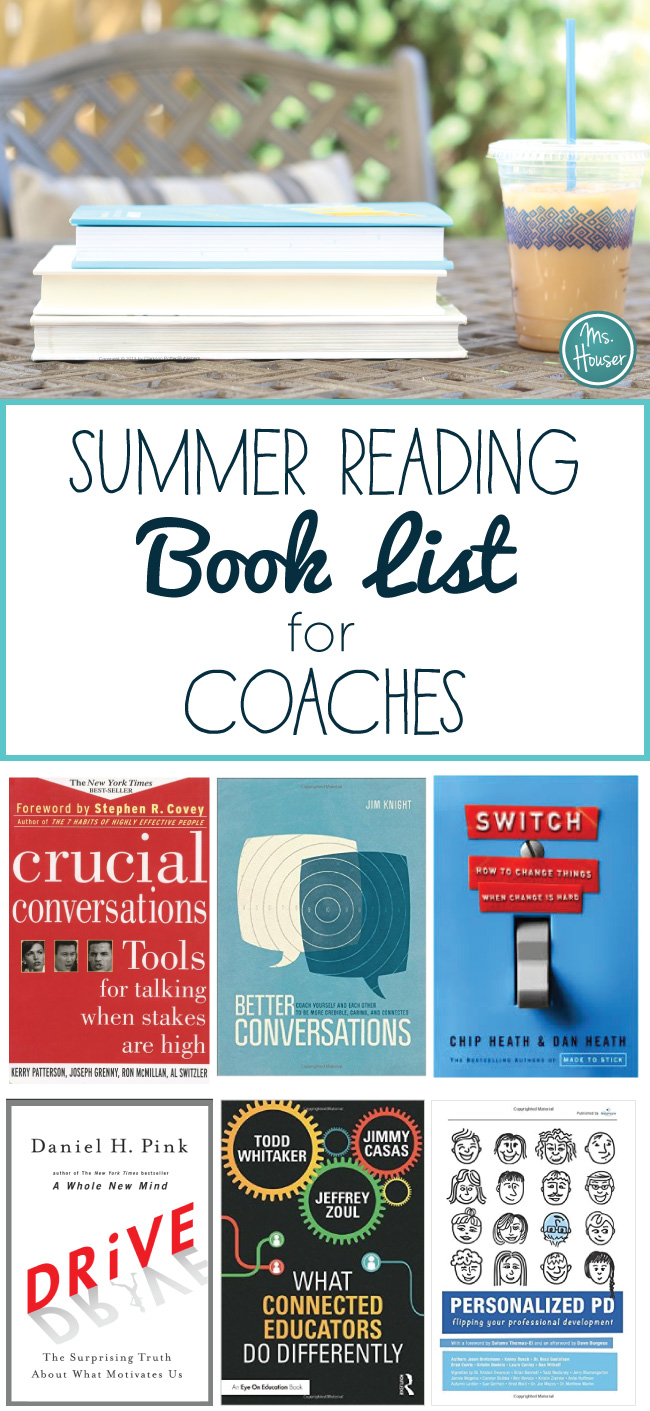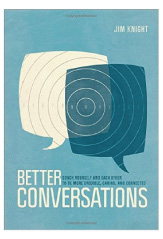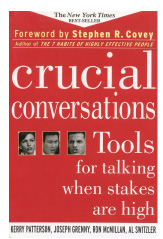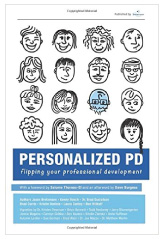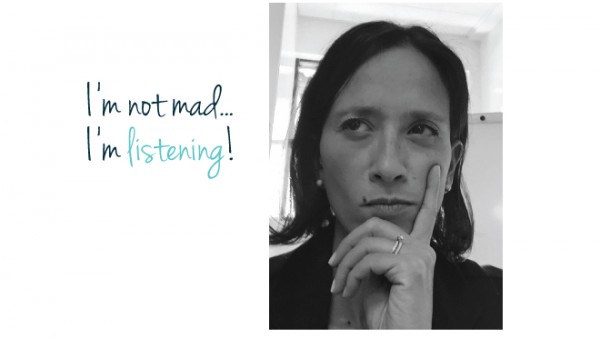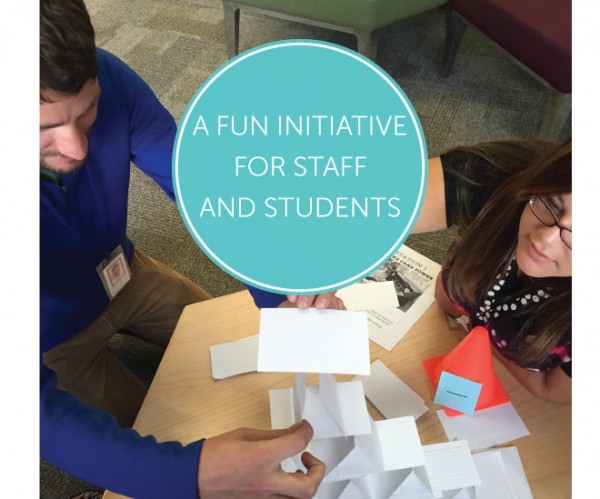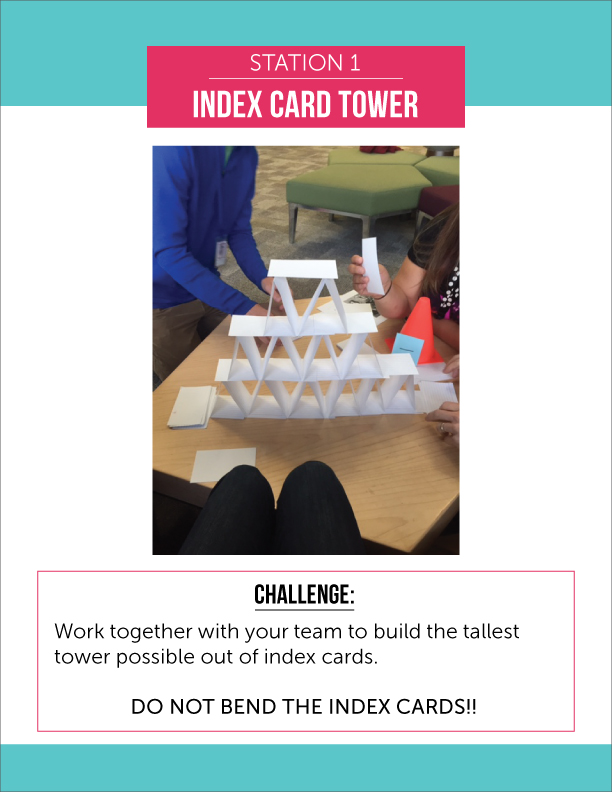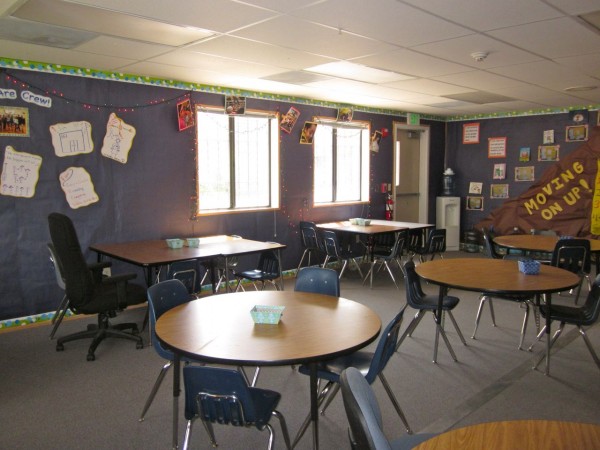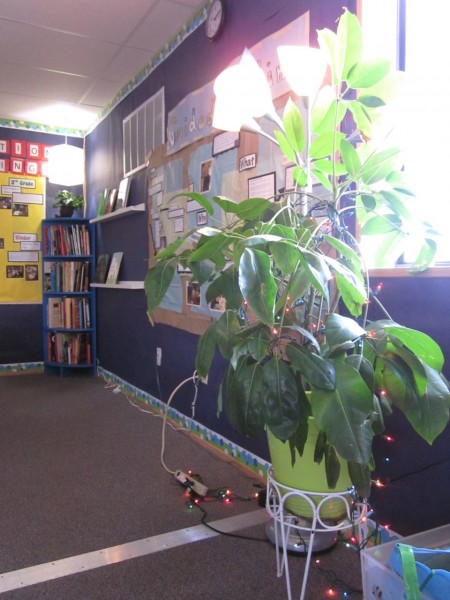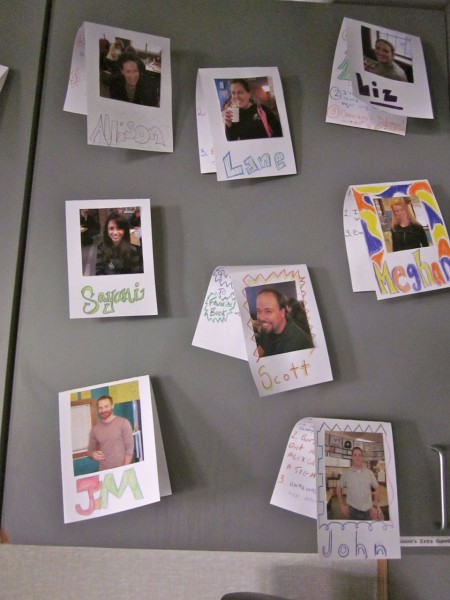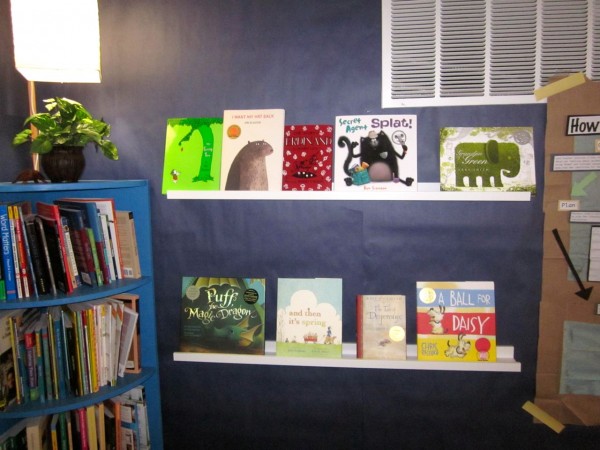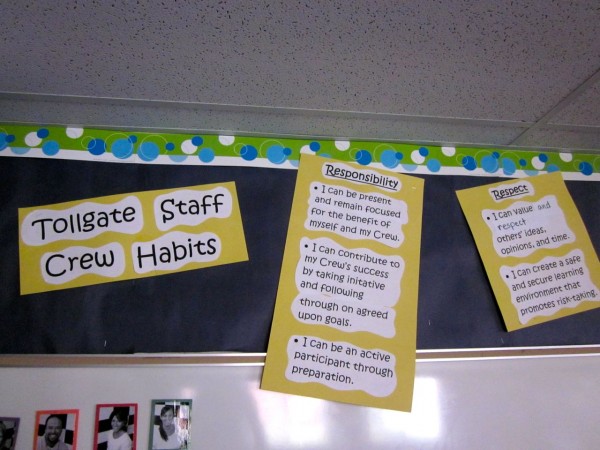PD Pad Pick-Me-Up
Goals and Motivation, Instructional CoachingHave you ever had one of those years at school that’s just been a bit…tough? This has been one of those years for us.
We’ve been working through some changes and challenges in leadership, that have left us all without a solid foundation to stand strong on, and just not our peppy selves.
As a coach, when you notice a dip in staff culture and morale, what can you do?
When I asked myself this question, I thought…well…hmm…what is something I’m pretty good at, I enjoy doing, and I know will help add some pep to our teacher’s step?? Think, think…I got it!
Creating beautiful spaces.
Working and learning in an inspiring space is something that makes us all feel good.
And where do we learn each week? The PD Pad!
So the designer in me stepped in and said, “Let’s do this.”
These past few weeks, using spare chunks of time, I’ve been chipping away at project: “PD Pad Pick-Me-Up”.

Alright, let’s take a tour, shall we? Come on in!
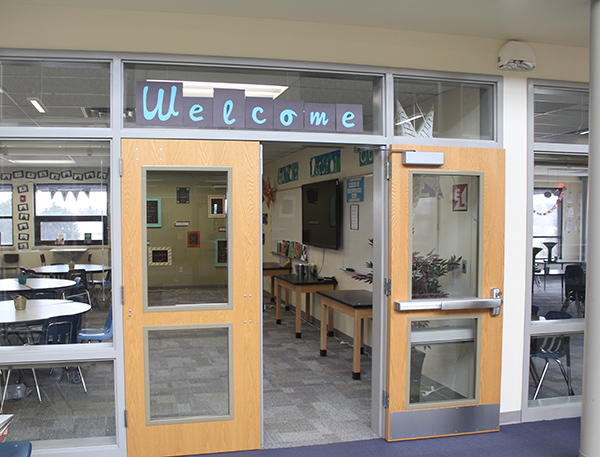
I made a Welcome Sign to greet teachers as they come in. I printed “Welcome” using a fun font on a turquoise background, cut out the letters, and matted them on different size sheets of black construction paper.

As you come in the room, to your right, you’ll see the three categories of our Work Plan Goals posted. Below those, are the Learning Targets guiding our work in PD. Some foliage always helps to liven up a space, so I got the plant in the corner at Hobby Lobby (not real, but still leafy :) and wrapped it in string lights. The star hanging above it is from Ikea. Lighting is one of those design pieces that can help take a room from drab to fab.
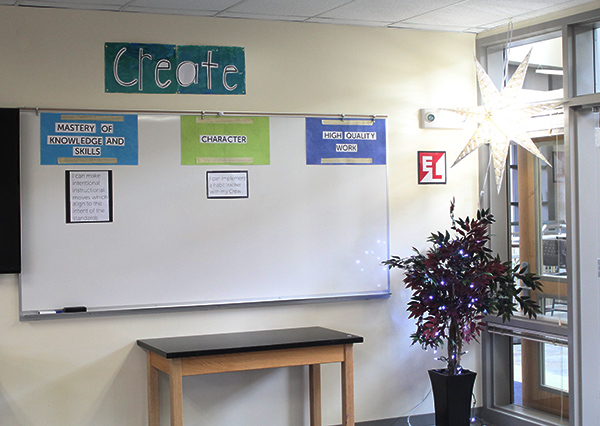
“Explore, Question, Create” are the three words that make up our school’s vision. So I knew I wanted these posted front and center. I asked a kindergartner to help me write the letters for the words, then backed them on a painted construction paper background that our art teacher had the first graders help her with.

OK, let’s take a look at the far side of the room. I love this corner of the space! Photos of students, and our character habits posted on the wall help anchor the room in the importance of the work we do everyday.
Oh, and you’ll see each table has a plastic basket to hold sticky notes, highlighters, and pens. I didn’t like the original colors the baskets came in, so I spray painted them a fun turquoise and gold to go with the color scheme of the room.

Here’s a closer look at the student photos. I wanted them to stand off the wall a bit, so I had canvas prints made at Walgreens.
On the wall, I added a smidge of color with gold strips of washi-tape. This also helped me cover up some ugly holes in the wall :)

Here’s our Habits wall. I made some DIY frames, then used white chalkboard marker on a black tag-board background to hand letter our staff norms connected to each of our Habits.

Above each of the three windows in the room, I strung the words “We Are Crew.” As an EL Education School, this phrase is really important to the work we do. To highlight it a bit more, I strung some bistro light strands right above.
As a teacher, I would always hang photos of students in the room to help illustrate that this was our space. And as a coach, I like to do the same thing. Black and white photos of each of the teachers, matted on a black background, with gold washi-tape, felt just right.


On the other side of the room is our snack station. It’s hard to add some pep to your step in an after school PD without snacks and caffeine :)

I designed this typography poster for a bit of motivation as teachers grab their snacks.

And there you have it! Hopefully this post gave you some ideas for how you might work to create beautiful spaces in your own building(s).

For more ideas and inspiration, here are two past PD Pads you can check out:
Creating a Professional Development Space
And lastly, if you’re going through challenges of your own at school, don’t worry. They happen to all of us. Just remember, teachers need you as their coach to stay strong and positive. You got this!
Talk to you soon,
![]()

